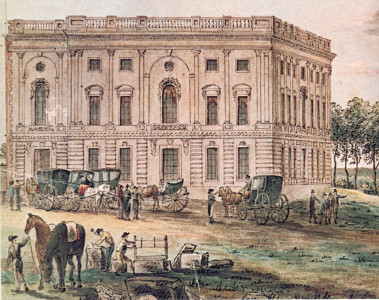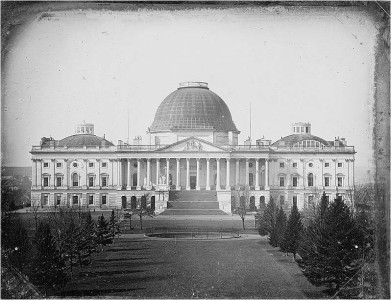United States Capitol
This is the first known photograph of the United States Capitol. Most of it contains stone from Stafford. In 1846, John Plumbe created this daguerreotype which shows the rounded dome known as the Bullfinch Dome. This dome graced the U.S. Capitol from 1825 -1856. It was made out of wood and covered with copper. The dome leaked and was replaced with a cast iron dome during the Civil War. This daguerreotype also shows 24 columns on the East side. The columns on the West (mall) side were made by placing one piece of stone on top of the other, like drums. Since the East side was to be the entrance, the planners thought the columns should be made of single shafts of stone, making the area look more impressive. In 1824, Government Island was reopened and single shafts of stone were quarried. Staffordian, Withers Waller, had a boat specially built that would carry one heavy shaft of stone to D.C. to be carved. He delivered over 24 column shafts, one at a time.
By 1800, only a small square section of the U.S. Capitol was completed. This portion would become the Senate, but now it held not only the Senate, but also the House of Representatives, Supreme Court, Circuit Court, and Library of Congress. [ Notice the stone masons working in the foreground.] Government Island workers were not sending up enough Aquia stone, so other quarries throughout Stafford also sent their sandstone to D.C. to complete the Capitol.


